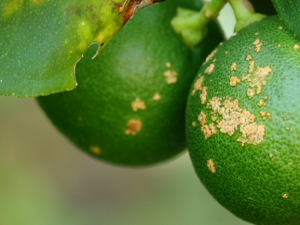
Fastidious plant pathogens infect citrus, tomatoes, potatoes, grapes, peppers and other crops grown throughout Texas. Often transmitted by insect vectors, these disease agents cause billions of dollars of damage each year. The U.S. citrus industry alone would save $3 billion per year through control of just one of these diseases, citrus greening.
One obstacle to understanding and controlling fastidious pathogens was the inability to cultivate them in a laboratory setting and to screen for potential therapies. These bacteria are believed to be responsible for Huanglongbing, also known as citrus greening disease, and other insect-vectored diseases such as potato zebra chip and tomato vein greening disease.
For the past few years, Texas A&M AgriLife Research scientist Kranthi Mandadi and his colleagues have been developing new biological technologies to fight fastidious or “unculturable” pathogens. Their work, “Plant hairy roots enable high throughput identification of new antimicrobials against Candidatus Liberibacter spp,” was recently published in Nature Communications.
This research is funded by USDA’s National Institute of Food and Agriculture’s Emergency Citrus Disease Research and Extension program, the Foundation for Food and Agricultural Research, and AgriLife Research’s Insect-Vectored Disease Grant. For more information, read the Texas A&M AgriLife Today article.
Farm Bill Priority Areas
Plant health, production, and products
U.S. States and Territories
Texas

